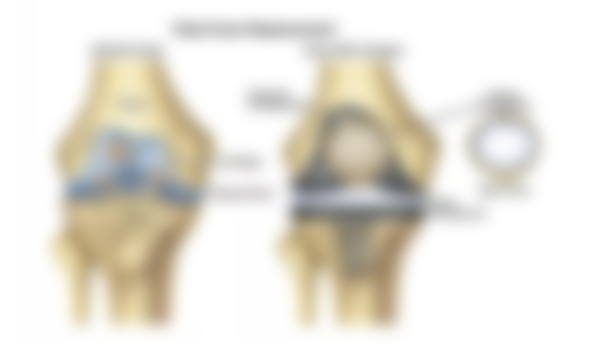Rheumatic diseases are usually associated with the problems of adulthood, but it is less known that more and more children are affected.
There are over a hundred rheumatic diseases, and the most common disease from the group of inflammatory rheumatic diseases is rheumatoid arthritis.Juvenile arthritis of unknown cause or juvenile idiopathic arthritis (JIA) is even the second or third most common chronic disease in children after atopic dermatitis and asthma.

What is and how common is rheumatoid arthritis?
Rheumatoid arthritis is a chronic, inflammatory rheumatic disease that can affect all joints as well as the joint parts. At the beginning of the disease, the small joints of the hands, feet, wrists and elbows were painful and swollen, on both sides. Later in the course of the disease, the inflammation can spread to large joints such as the knees, hips and ankles, less commonly to the spine. Rheumatoid arthritis occurs in about 1% of the population. Anyone can get sick, including children and the elderly, but the most common onset of the disease is in the young to middle-aged. Women get sick three times more often than men, and most often the disease breaks out in the most active period of life, between the ages of 30 and 55. The disease occurs in all ethnic groups and races and is therefore widespread throughout the world.
What causes rheumatoid arthritis?
What is the influence of genes? Rheumatoid arthritis occurs in genetically susceptible individuals. Why susceptibility to this disease is increased in some people and not in others who have similar genes is not yet entirely clear. Certain genes and other factors that can trigger the disease (such as infections, injuries, hormonal changes, other external factors) are being intensively studied by experts around the world.
Does the disease trigger an infection? Many believe that rheumatoid arthritis is triggered by various infections, although there is no direct evidence for this. The disease is not contagious. It is possible that the various pathogens (bacteria, viruses) to which we are all exposed trigger an abnormal immune response and disease in genetically susceptible individuals.
What role does the immune system play? It is not yet fully understood what triggers the onset of the disease. The immune system plays an important role in joint inflammation and its consequences. It is important for the body's defense against bacteria, viruses and other foreign substances. In rheumatoid arthritis, the immune system malfunctions, attacking one's own tissues, joints and other organs. Cells of the immune system leave the bloodstream, attack joint tissues and cause inflammation. Immune and inflammatory cells in joint tissues and joint fluid secrete various enzymes, antibodies and cytokines that damage joint parts.
What are the symptoms and signs of rheumatoid arthritis?
The symptoms and signs of rheumatoid arthritis vary from patient to patient. The disease is characterized by joint inflammation, which usually affects several joints. The onset of the disease may be sudden or slow. If the joint inflammation persists and does not subside after treatment, it can damage the articular cartilage, bones and tendons and ligaments around the joint, leading to poor mobility and permanent damage to the inflamed joint. Often rheumatoid arthritis progresses mildly and progresses slowly. Sometimes it happens that the disease calms down on its own and goes away for years. However, a more severe course is also possible, with rapid progression and deterioration, which is fortunately less frequent. Accompanying general signs of the disease are malaise, fatigue, loss of appetite, weight loss, less often slightly fever. In addition, anemia (anemia) may occur, which worsens general well-being. Some patients with rheumatoid arthritis have subcutaneous rheumatoid nodules, most often above the elbows, possibly above other joints.Very rarely, patients with rheumatoid arthritis develop inflammation of the pericardium (pericarditis), rib cage (pleurisy) or lung tissue (pneumonitis). Dry mouth or eyes can also occur, then we talk about dry mucous membrane syndrome or associated (secondary) Sjögren's syndrome. Inflammation of small blood vessels (vasculitis) can occur even less frequently, in which case rashes, superficial or deeper ulcers are possible, especially on the skin of the feet.
How is rheumatoid arthritis diagnosed?
A patient with rheumatoid arthritis should be diagnosed as soon as possible. Currently, it is still considered that the inflammation in the joints must last at least 6 weeks to confirm the diagnosis. The diagnosis of rheumatoid arthritis is made by a specialist rheumatologist. The disease is diagnosed on the basis of the patient's problems, clinical examination, blood tests, X-rays and some other imaging tests (ultrasound of the affected joint, magnetic resonance imaging (). The number of affected joints, the duration of the disease, inflammatory parameters, and the presence of specific autoantibodies are important in making the diagnosis.
How is rheumatoid arthritis treated?
The treatment is multifaceted. If the disease is very active, the patient is prescribed glucocorticoids, which quickly improve the condition. Most patients feel significantly better after just a few days. At the same time, basic drugs for the treatment of rheumatoid arthritis are added, which "quench" the inflammation in the long run and whose effect does not show until a month or two later. These are slow-acting immunomodulatory drugs. Patients also receive simple anti-inflammatory drugs - more modern forms of aspirin Sometimes patients take quite a few medications at the same time. It very much depends on the prognosis of the disease. If a patient has many affected joints and high inflammatory parameters, this indicates a worse course of the disease and he receives more medication at the beginning. However, if rheumatoid arthritis is treated very quickly and intensively, the patient can return to normal life within a few weeks. However, if the drugs of first choice do not work, which happens in about 20 percent of patients with rheumatoid arthritis, biologics are tried.
Medications to relieve the symptoms of the disease are called nonsteroidal anti-inflammatory drugs. They have analgesic, anti-inflammatory and anti-fever effects. Almost all nonsteroidal anti-inflammatory drugs known today have the same or similar efficacy.However, caution should be exercised when using them, as they can also cause serious side effects. They act on the lining of the gastrointestinal tract, which can lead to ulcers, bleeding in the upper gastrointestinal tract and even perforation of the digestive tract. Prolonged use can lead to severe kidney damage, may increase the risk of cardiovascular complications and stroke, and may also be involved in blood clotting processes.
Glucocorticoids are used in rheumatoid arthritis when the disease is severe, progresses rapidly, and when other drugs for joint inflammation do not calm down effectively enough. In rheumatoid arthritis, lower doses of methylprednisolone (up to 16 mg) are usually given if possible for a short time. Glucocorticoids can be used in combination with other drugs. If used in combination with non-steroidal anti-inflammatory drugs, the risk of side effects on the upper gastrointestinal tract is higher, so concomitant protection of the gastric mucosa is required. If glucocorticoid therapy is prolonged, calcium and vitamin D should be taken, and sometimes other medicines to prevent osteoporosis. Dose reduction and discontinuation should be very gradual, under medical supervision. Glucocorticoids can also be injected into an individual inflamed joint if other methods of treatment do not soothe the joint inflammation. Injections into the joint should not be injected too often. This is allowed in the load-bearing joints only a few times a year, at least six weeks apart; in other joints, glucocorticoid injections may be more frequent.
Immunomodulatory drugs (methotrexate, sulfasalazine, leflunomide, cyclosporine…) affect the malfunction of the immune system and change the course of the disease, preventing the progression of the disease and thus disability. Treatment with them is long-lasting, usually lasting a lifetime.
In addition to joints, rheumatic diseases can also affect the skin and muscles…
Any inflammatory rheumatic disease can also affect the skin and other organs. In rheumatoid arthritis, skin changes may also be present, as is the group of spondyloarthritis. In case of ulceritis, small spots may appear on the skin, or whole patches of skin may be completely black because the vessel that feeds the skin becomes inflamed and consequently closes, leading to the death of part of the skin. Systemic sclerosis causes thickening of the skin, which may completely discolor in some parts and darken completely in others. It is similar in muscle diseases. Some diseases are basically an inflammation of the muscles (polymyositis, dermatopolymyositis), which manifests itself as muscle weakness. Suddenly, the patient is unable to get up normally, has difficulty walking up stairs, has difficulty raising his arm, več He may no longer be able to turn in bed or swallow. The disease requires immediate and intensive treatment. However, mild muscle inflammation may be an accompanying phenomenon of another rheumatic disease.
Other measures in the treatment of rheumatoid arthritis
A well-educated individual with rheumatoid arthritis copes more effectively with the disease, so it is necessary to be well acquainted with it. He should be encouraged to talk to loved ones, relatives and others who can help him and participate in treatment. Today, it is no longer the case that rheumatoid arthritis primarily requires rest in order not to further damage the affected joints. We know that a patient with regular daily physical exercises, adjusted to the age and activity of the disease, can significantly improve their health, joint mobility, physical fitness, reduce pain and swelling. It also reduces fatigue, strengthens muscles and bones, improves general well-being.

It is very important for a person with rheumatoid arthritis to find out for themselves what is most beneficial for them and how they can best achieve the best possible physical and mental well-being.
When is surgical treatment needed?
If irreparable joint damage occurs, so that it is painful even at rest, less mobile, causes problems with walking and other activities, surgery is required. Most often, this is a joint replacement, which we call arthroplasty. Today, it is possible to replace any defective joint, but most often they surgically replace the hip or knee joint. Operations on large joints are performed by orthopedists, and on small joints of hands by plastic surgery surgeons.

Artificial joints are made of plastic material (previously they were metal) and usually last for many years. Surgical hip and knee replacements are successful. The patient should be taught the exercises before the operation, which he will have to perform after the operation. Immediately after the surgery, a carefully managed rehabilitation is required, which usually continues in a natural spa. In addition to joint replacement, other operations are possible, such as suturing torn tendons, removal of inflamed inner joint envelope (synovectomy), relief of cramped nerves, especially in the carpal tunnel, cleaning of articular cartilage, removal of joint debris and the like. Some surgeries today are performed with an arthroscope - a special device with an illuminated tube that is inserted directly into the joint. The procedure is called arthroscopy. Compared to conventional surgeries, arthroscopy is significantly less burdensome for the patient, rehabilitation is faster, and the length of hospital stay is shorter.

Children also suffer from rheumatic diseases
These diseases were sometimes called juvenile rheumatoid arthritis, similar to rheumatoid arthritis in adults. But today we know that children are not young adults and that this disease is different from joint inflammation in adults.
Diagnosis is a long process for the youngest, as a thorough examination of the joints and long-term monitoring are required; the disease most often affects children between the ages of two and four, or during puberty, and the fact that a small child cannot explain exactly what hurts him is especially difficult to detect in the early years. Observing mood swings is therefore an important task for parents, and external symptoms often include swollen joints, such as the elbow, knee, wrist, or ankle, most often in the morning before the body moves.
These diseases in children are not degenerative, so they do not occur due to wear and tear of the joints with age, but are mostly autoimmune diseases, which means that the child's immune system recognizes cells in the joint envelope as something foreign and attacks them, leading to joint inflammation. they are also caused by genetic defects.
A child with oligoarthritis usually has a favorable long-term course of the disease, is less favorable in children with polyarthritis, and is least favorable in systemic arthritis, which requires very aggressive treatment in the long term.Each of these forms of arthritis can also be accompanied by complications. Among the more common is chronic uveitis, an inflammation of the eye vessel.If not detected, vision slowly deteriorates and the child may even go blind in a sore eye.

Signs of the disease Juvenile idiopathic arthritis has two peaks in occurrence: the first is between the ages of two and four, and the second peaks at puberty. A small child cannot tell that something is hurting him, but the parents notice that he is in a bad mood, does not eat, stops using the limb with the affected joint, limps, stops walking. The most commonly affected are large joints such as the elbow, knee, wrist, ankles. The joint hurts the least when it is bent, so the child holds the limb in a bent position. Parents also notice swelling of the joint. In polyarthritis, the joints of the fingers are also often affected and the child cannot bend the fingers or make fists. It is also characteristic that the problems are most pronounced in the morning, when the child wakes up, when the joints are loose, it is better.
Diagnostics Since inflammation of the joints can also be caused by other diseases, infections, injuries, malignant diseases and other possible causes must first be ruled out when making a diagnosis. The diagnosis cannot be confirmed by a specific laboratory test, so it is clinical, which means that it is determined on the basis of examination of the joints and long-term monitoring. They are also assisted by imaging diagnostic methods, X-ray and magnetic resonance imaging, and ultrasound examination. Which subgroup of the disease it belongs to can be inferred on the basis of certain autoantibodies, such as rheumatism factor. In contrast to adults, where 80 percent of patients have positive rheumatism, this is present in less than five percent of children. These children usually have a more aggressive form of the disease.
Treatment The goal of treatment is to calm the inflammation of the joints as soon as possible and with as few complications as possible, which leads to a markedly improved quality of life for the child and a better long-term course of the disease. Oligoarthritis is usually started with non-steroidal anti-inflammatory drugs, if they are not effective, they switch to corticosteroid injections directly into the affected joint.
They also start treating polyarthritis with nonsteroidal anti-inflammatory drugs, then switch to the immunosuppressive drug methotrexate. Although excellent, it is also not a miracle cure, and some children do not respond to this treatment. They use other immunosuppressive drugs. In the most severe forms of the disease, sometimes the child must also be treated with a systemic steroid, which usually soothes the inflammation within a few days. For the most aggressive and persistent forms of the disease, they use biological drugs, which are increasingly on the market. "If methotrexate changed the long-term course of the disease in these patients 15 years ago, over the past five years, biologics have similarly altered the long-term course of the most severe patients with persistent disease. Our desire is to change the course of the disease so much children who will need to be in a wheelchair due to joint damage or will need such aggressive measures as joint replacement.

In severely affected children, the joints can be permanently damaged, and some can also develop rheumatoid arthritis in adulthood.
Each illness further burdens family relationships, but the maturity, inner strength and ability of both parents in such a severe chronic illness are essential to maintain and maintain coexistence for the benefit of the sick child, siblings and, of course, parents. It also often happens that some people cannot cope with this condition and want to distance themselves from this disease and people. Families therefore need the help of pediatricians, rheumatologists, psychologists and, last but not least, societies in which we socialize and know that we are not alone in the disease.
There is no cure for rheumatoid arthritis, medicine does not know how to cure this disease. Experts are trying to find the causes of the disease and are always inventing new and better drugs. Intensive research into rheumatoid arthritis, better knowledge and understanding of inflammatory and immune processes, and the discovery of genetic factors therefore bring great hope for the future.
Photos are taken from google.com.
Video is taken from You Tube channel.
Thank you for reading my article.

Love you all.@Purebeauty.







You did extensive research on this disease. Sounds good to me.
Do you have a family member with this disease for what attracted you to write about it?